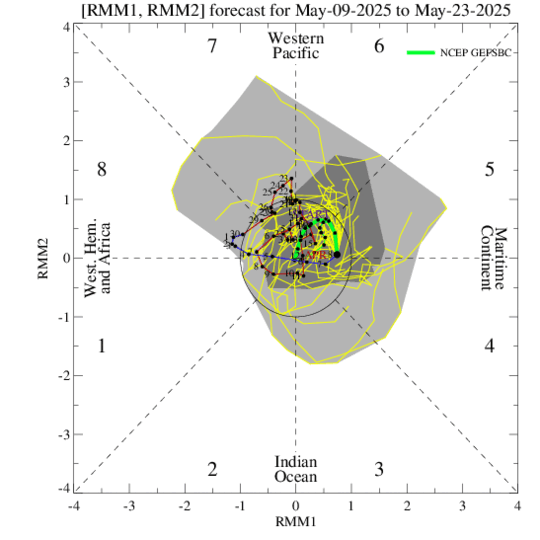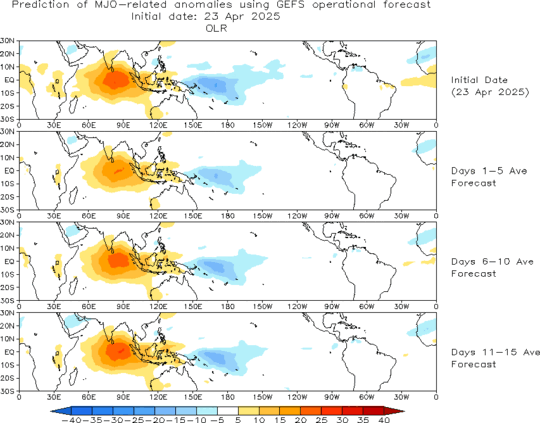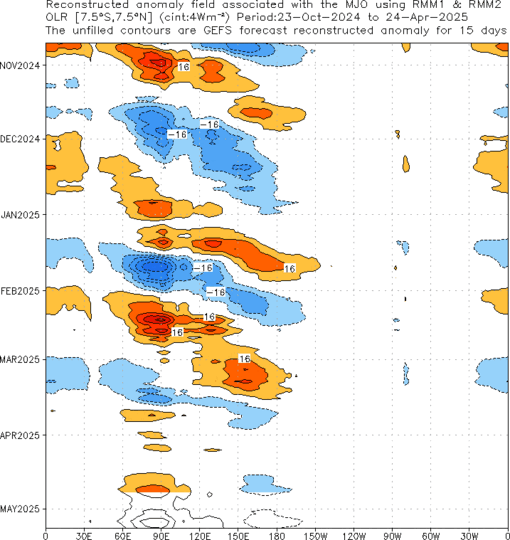Ensemble GFS MJO Forecast (Climate Prediction Center, NWS)
Shown below are MJO forecast products using information from the ensemble GFS. The Wheeler and Hendon (2004) methodology is applied to the model forecast data and are equivalent to those perfomed on observations with necessary adjustments due to the use of realtime model forecast data. These include utilizing bias-corrected fields. Please inquire for additional details if needed. The anomalies (with the seasonal cycle and interannual variability removed) are then projected onto EOFs based on observed data.

Phase diagram showing the evolution of the last 40 days of observations along with the 15 day ensemble GFS forecast. The yellow lines are the twenty ensemble members and the green line is the ensemble mean (thick-week 1, thin-week 2). The dark gray shading depicts 90% of the members fall in this area and the light gray shading indicates 50% of the members.

Forecast of MJO associated anomalous OLR for the next 15 days from the ensemble mean GFS based on forecasts of RMM1 and RMM2. Blue (yellow/red) shades show negative (positive) OLR anomalies and enhanced (suppressed) convection. Forecasts do not include direct contributions from other climate modes such as ENSO, monsoons, etc. - only the MJO.

Time-longitude section (7.5N-7.5S) of MJO associated anomalous OLR for the last 180 days and for the next 15 days from the ensemble mean GFS based on RMM1 and RMM2. Blue (yellow/red) shades show negative (positive) OLR anomalies and enhanced (suppressed) convection. Forecasts do not include direct contributions from other climate modes such as ENSO, monsoons, etc. - only the MJO.
Link Sumber : (Climate Prediction Center, NWS)
